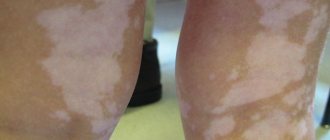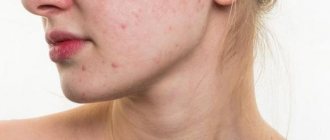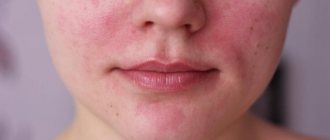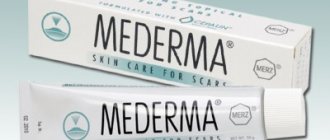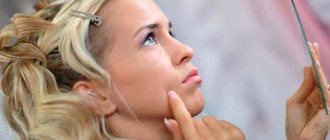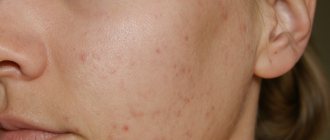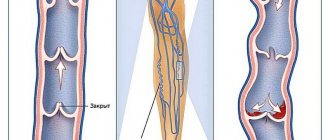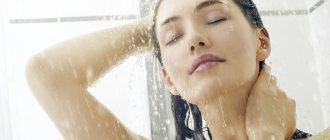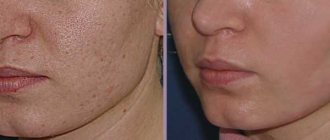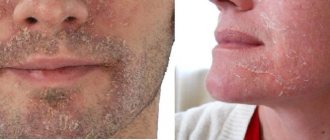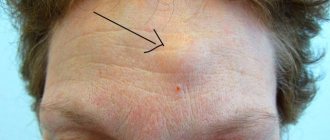Acne
The human body is made up of many small pores that are present on the surface of the skin.
Pores are tiny openings where hair follicles are located. Sebaceous glands produce sebum, keep the skin moist, lubricate the hair, and are located just below the hair follicles. Poor hygiene or wearing too much makeup on your face can clog these pores. Constant blockage and accumulation of sebum inside the skin can lead to the formation of closed or open comedones. Their infection leads to inflammation, as a result of which the skin around the comedones may become red.
Also sometimes a so-called blind pimple can appear, when the accumulation of sebum, bacteria and dirt occurs deeper under the skin. At first it is usually not noticeable from the outside, but is only felt to the touch, like a compaction. Over time, symptoms may be supplemented by redness, pain, and the formation of a light area in the middle when the contents move closer to the surface of the skin. This growth often appears as a pink or red spot.
So, a spot on your nose under the skin could mean you just have a sebaceous cyst. It is usually painless at first, but the more it grows in size, the more discomfort and pain it will cause. The composition of the contents of this formation is often white flakes of keratin - a key element in the formation of skin and nails.
Reasons for formation
Yellow spots on the skin can appear as a result of various pathological conditions in the human body, which is what we will talk about now.
Hemorrhage
Hemorrhage is a hemorrhage that is formed as a result of a violation of the integrity of blood vessels. The tissues become saturated with blood, which provokes the appearance of red spots on the skin, which change color over time and become yellow.
This could be lichen, urticaria and other diseases. Their main symptom is the formation of yellowish spots. In most cases, young children suffer from these pathological conditions, but their occurrence in adults is no exception.
Children develop pink spots that fill with exudate over time. After healing, yellow-brown marks remain on the skin. In adults, yellow spots appear on the face, arms, stomach and spread throughout the body, their diameter reaches 5 mm.
Please note that diseases can develop as a result of:
- mechanical irritation of the skin;
- influence of ultraviolet radiation;
- use of medications;
- influence of cold;
- psychological overload;
- consumption of certain foods.
Systemic diseases
Changes in the skin can appear with Addison's disease, lupus erythematosus, and diabetes mellitus.
Other common causes
Dr Firas Al-Niami, medical director of the Skin Group, says while the appearance of spots may not necessarily mean you have acne, sometimes the location and type of darkening on the face can point to a specific diagnosis.
Thus, facial spots can help diagnose the following conditions:
- Spots on the chin and jaw can signal hormonal changes and fluctuations in the body. This is often associated with natural stress processes in the body, such as puberty and menstruation.
- When spots also appear around the mouth, it may signal a condition known as perioral dermatitis. The exact cause is not known, but it may be related to saliva, exposure to cosmetics and other chemical irritants or allergens.
- Seborrheic dermatitis is the main cause of dandruff on the scalp. But sometimes it can also spread to the nose, eyebrows, and beard. Symptoms include redness and often flaking.
- Some hair styling products such as oils and waxes can cause white or black pimples to appear on the forehead, according to a UK skin organization.
- Pimples on the cheeks, according to Dr. Ajali Mahto, can be caused by simple things like your phone. He says that holding a phone to your cheek for a long time activates the sebaceous glands. The heat generated by your phone and the bacteria it contains can lead to acne.
- Spots or sores that also extend to the neck can be a clear sign that your body is fighting an infection or other illness.
Spots, pimples and bumps on your face should not be ignored. A timely medical diagnosis is necessary not only to prevent such lesions from spreading to other parts of the body, but also to treat the underlying cause to stop the spots from appearing in the future.
Xanthomatosis
This disease also causes yellow spots on the body called xanthomas. They are not tumors, but reflect an internal pathological process in the body. Yellow spots usually appear during menopause, their location is concentrated on the face, eyelids, and inner corners of the eyes. Localization on the soles, palms, and other areas is rather an exception.
The reasons for their appearance are not fully understood, but the leading role belongs to lipid metabolism disorders. Increase the risk of xanthoma formation:
- liver diseases;
- diabetes;
- leukemia;
- excess weight;
- lack of thyroid hormones.
High levels of cholesterol, other high- and low-density lipids, and fatty acids that circulate in the blood are involved in the mechanism of the onset and development of the disease. Xanthomas are of the following types:
- Diffuse;
- Flat;
- Intertriginous;
- Palmar;
- Eruptive;
- Tuberose.
The formations look like yellowish stripes, can be round or oval, and often protrude slightly above the surface of the skin. Yellow nodules and spots are sometimes located singly, and multiple rashes are also found. With a hereditary factor, yellow spots are located throughout the body, their consistency is soft, they form chaotically, and the buttocks and thighs are often affected.
Spot inside the nose
The spot can appear both on the surface and inside the nose. It may be painful and itchy, especially when touched with your hands. The spots inside the nose will vary in size and color depending on what is causing them. Most often, a red or white pimple forms in the nose, which can be large or small, but is almost always painful and causes discomfort.
Inside the nose, such formations can be caused by the following factors:
- Clogged hair follicles . The cause may be excessive secretion of sebum by the sebaceous glands due to hormonal fluctuations. Bumps, spots or pimples inside the nose associated with changes in hormonal levels can be observed during puberty, menstruation and the early stages of pregnancy.
- Stress and anxiety . Various medical and scientific studies show that stress interferes with the normal functioning of the body. When stressed, its normal functioning, including the excretory function of the nervous system and brain, is disrupted. If the lump inside your nose is caused by stress, you will need to use relaxation techniques to control the situation.
- Wearing a lot of cosmetics , such as foundation. Blackheads and whiteheads (acne) form when pores become clogged with sebum, dead cells and dirt, creating painful and irritated patches of skin. Thus, most skin care professionals advise not to go to bed without removing your makeup. Regularly exfoliating the dead layer of skin can also help prevent nose blemishes.
- Vitamin deficiency . A lack of vitamin A and E is believed to be the main cause of acne.
Other causes of yellow spots
If unusual formations appear on the skin, a person should first seek advice from a dermatologist.
Only a specialist can determine the disease by appearance, size, color, shape and other indicators and prescribe appropriate treatment.
If the case requires confirmation of the diagnosis, you will need to take scrapings from the damaged area and consult an oncologist or venereologist.
Depending on the problem, different treatments may be prescribed:
- the primary disease and the resulting spots are its symptoms;
- allergen, if allergy appears with supportive therapy;
- lichen spots, which require an integrated approach with the use of oral and external remedies, the use of hygiene products and strengthening the immune system;
- pigmented areas lightened with special means, peelings, mesotherapy, cryo procedures, laser.
Yellowish spots of different shades can appear when blood vessels and capillaries are damaged. Such marks disappear after about two weeks. With mechanical injuries, the shape of the formations can be elongated or round. Over time they become pale and then disappear completely.
The presence of yellowish spots may raise suspicions about systemic diseases: diabetes, lupus erythematosus, Addison's disease, in which the adrenal glands produce insufficient amounts of cortisol. Also, yellowish rashes can form during oncology, signaling pathology in the internal organs: in the liver, gall bladder, and kidneys. Some sexually transmitted diseases can also trigger their appearance, especially in the groin area.
There are also a lot of diseases that can cause yellow spots to appear on a person’s skin. Therefore, it is recommended to be attentive to neoplasms on your body, and if questionable pigmentation and moles are detected, promptly undergo examination by a dermatologist.
Nose piercing spot
Nose, lip and ear piercings are common forms of piercing not only among young people, but also among adults. However, piercings are also a common cause of painful spots, bumps, and lumps.
Poor or lack of care can lead to infection of the puncture site. A bacterial infection around the piercing is what can cause painful bumps or spots to form. The infection occurs when:
- The piercing was not done correctly.
- The jewelry is of poor quality or has reacted with the skin, creating a wound.
- You contracted the infection by touching your pierced nose with dirty hands.
- You removed the nose ring until the wound was completely healed.
The severity of the infection determines the severity of the problem, including life-threatening in some cases. The spot may be large, itchy, and cause other discomfort. If you notice any abnormalities after your nose piercing, report it immediately to your piercer or seek medical attention directly from a medical professional.
Learn more about nose piercing scars (bumps) and infections.
Skin cancer on the nose
It is necessary to have a doctor, usually a dermatologist, examine any damage that appears on the skin and lasts more than a week. So a spot on the nose can sometimes be caused by skin cancer. There are various signs that indicate that a skin lesion is malignant.
Different types of skin cancer have their own signs and symptoms. Forms of this disease include:
Basal cell carcinoma
Basal cell carcinoma arises from the basal cells of the skin and is the most common type of skin cancer. It can look different, ranging from pink or red spots that are slightly scaly, to dome-shaped growths on the skin of various colors.
Squamous cell carcinoma
Squamous cell carcinoma (squamous cell carcinoma) starts in flat skin cells and is also a very common form of this disease. An important cause is prolonged exposure to strong sunlight without skin protection. Externally, the manifestations, as with basal cell carcinoma, can vary greatly. Sometimes these are rough, scaly patches that can bleed, and in other cases they are raised skin with indentations in the center or open sores.
Melanoma
Melanoma is a malignant formation of melanin-forming cells (melanocytes), which poses the greatest danger among all types of skin cancer, but is less common. Particular attention should be paid to such symptoms as the appearance of new spots that resemble moles with uneven edges, bleeding, changing color, flaking, itching.
Actinic keratosis
Actinic keratosis is a precancerous condition that is very different in appearance from the types described above. Occurs due to exposure to sunlight and presents as rough, dry, scaly patches.
Versicolor (pityriasis versicolor)
Yellow spots on the skin can be caused by pityriasis versicolor. This is an infectious disease caused by a fungus that affects the stratum corneum of the skin. The pathogen is found in 3 types; the mushrooms differ in shape, but can transform from one to another.
The disease often manifests itself after prolonged exposure to the sun, so residents of warm countries are more likely to get sick. The disease most affects young men and adolescents.
The route of infection is not completely clear. Some experts argue that the disease is not contagious. Others believe that transmission of the fungus is possible from an infected person to another: there are known cases of illness within the same family. The incubation period can last up to 2 months. Spots appear on the affected areas; at first they are light, then they acquire different shades: from yellow to dark brown.
Subcutaneous bleeding from a damaged vessel
You could have damaged a blood vessel for a variety of reasons, causing blood to pool under the surface of the skin and cause a bruise. The main cause is injury. Damaged blood vessels may continue to bleed into the skin for the following reasons:
- Allergic reaction
- Autoimmune disorders
- Side effects from taking medications
- Radiation and other causes
If the wound continues to bleed, especially after a nose piercing, it should be reported to a healthcare professional as soon as possible. Be sure to keep the wound clean and avoid touching it with dirty hands to minimize the risk of spreading infection.
Hyperpigmentation
Hyperpigmentation on the skin comes in different forms:
Lentigo is a benign pigmentation. But you should make sure that it is not lentigo maligna, a type of melanoma that grows very slowly.
Lentigo appears as brown patches that may appear slightly raised above the rest of the skin. The jagged edges distinguish it from freckles or birthmarks. There are solar, juvenile and senile (age spots) lentigo. Solar is the most common and is associated with exposure to UV radiation.
Melasma and chloasma
Melasma/chloasma are forms of hyperpigmentation that are common among people with darker skin and are often associated with pregnancy or hormonal changes for other reasons. Sunlight also plays an important role in the appearance. If we are talking about the face, then usually such dermatosis affects the cheeks and forehead along with the nose, but sometimes the main area can be only the nose.
Post-inflammatory hyperpigmentation occurs after damage to the skin, such as severe acne or a burn.
Freckles are flat, round spots that are usually brown or light brown in color. Freckles are an extremely common type of hyperpigmentation and are more common among people with lighter skin tones.
Malignant melanoma is a type of skin cancer that develops from pigment-containing cells (melanocytes). The main cause of this form of cancer is exposure to ultraviolet radiation. People with low levels of skin pigment (fair skin) are more likely to develop melanoma. Ultraviolet rays come from the sun and other sources such as tanning devices (tanning beds). In women, these spots are more common on the legs, while in men they appear on the back. However, they can appear on any part of the body, including the nose.
Pigmented nevus
The nodules have a dense consistency, with a smooth surface similar to an orange peel. It occurs in men and women, and children can get sick. The dermis may thicken and the skin folds may deepen. The affected areas are located in the inguinal folds, on the upper and lower extremities, face, and torso. The process lasts for many years, exacerbations occur due to friction with clothing or after thermal procedures.
Yellow spots on the body can be benign and are quite common. Cellular nevus is a congenital condition where the pigment melanin accumulates in skin cells. The color of a pigmented nevus ranges from light yellow to brown and it has characteristic differences:
- flat spot merging with the surface;
- protrudes above the surface of the dermis;
- formations in the form of a hemisphere, similar to warts.
There are giant nevi, they can be located on any part of the human body, on the face, even on the head under the hair. Such formations can transform into malignant tumors. Treatment is indicated in cases where there is a risk of malignancy of the process, a genetic predisposition (there were cases of melanoma in the family) or the nevus grows rapidly and is located in a place where it is exposed to injury.
Light spots on the nose of a small child
Milia
If a baby's light spot looks like a cluster of small white bumps, it may be a milia. Milia are white, hard pimples that appear on the skin as a result of blocked sebaceous glands. They are small in size and often do not hurt or itch. They appear around the eyes, on the cheeks, around the nose, on the forehead and are completely harmless. No treatment is required, the rash will go away on its own in an average of a month.
Milia also occurs in adults, but more often in the eye area.
Additional diagnostics
The choice of methods for diagnosing the underlying disease in the presence of such a symptom will depend on the current clinical picture and the medical history collected by the doctor during the initial objective examination.
To make a diagnosis, the following laboratory and instrumental methods can be prescribed:
- general blood and urine tests;
- detailed biochemical blood test;
- blood sugar test;
- tumor marker tests;
- immunogram;
- Ultrasound of internal organs;
- gastroenterological studies;
- CT;
- MRI.
Based on the examination results, the doctor can determine the etiology of the symptom and prescribe the correct course of treatment.
Why dark spots appeared on the skin of the hands or in other parts of the body, the doctor will tell you. After a clinical examination, he will prescribe a number of additional diagnostic procedures to clarify the cause and nature of the process. They may be:
- Complete blood count (erythrocytes, platelets, hemoglobin, ESR).
- Biochemical blood test (adrenal hormones, electrolytes, glucose, carotene).
- Scraping of affected areas (microscopy).
- Iodine test (Balzer) and examination under Wood's lamp.
- Dermatoscopy.
Each condition requires an individual approach and a full examination. Only then will yellow spots on the body cease to be a source of concern when their cause becomes known. The pathological process requires appropriate treatment, and a cosmetic defect can be eliminated using hardware procedures or other means.
Quite common nowadays are questions about why yellow spots appear on the human body and what they may indicate. That is why we will now try to understand this in more detail.
A person’s skin is considered a mirror of his health, because a considerable number of diseases and pathological processes are manifested by changes in his condition. Most often, various spots appear on the skin. In this case, it is recommended to seek help from a doctor as soon as possible, because only he can determine the exact cause of their appearance and prescribe adequate treatment.
White flat spot on nose
Vitiligo
Lightening of the skin around the nose is sometimes caused by vitiligo, although more often the area extends beyond the nose itself and includes the mouth, chin or forehead. Vitiligo is a discoloration of the skin, hair, mucous membranes and even eyes due to the death or cessation of activity of pigment-producing cells. If only one area of the body is affected, such as the nose, then it is most likely a segmented type of vitiligo, which usually develops over a year or two and stops.
Causes include heredity, autoimmune disorders and predisposing events such as burns or chemical exposure.
Read more about white spots here.
Painful spot
Pain usually indicates inflammation or that nerve endings are affected. This may be due to acne, a deep tissue cyst, or a more serious problem including cancer. If such a spot looks suspicious and does not go away within a week, then you need to show it to a doctor.
Having a painful spot on your nose can cause a lot of inconvenience. The famous English newspaper Daily Mail published a description of the case of 59-year-old Joy Yaffe, who noticed that spots were beginning to appear on the right side of her nose.
She never considered them anything serious and hid them with facial cosmetics. Joy said she was surprised to find the spot as her skin has always been clear. Thanks to a meticulous skin care routine, the growth disappeared within a week, but returned six months later in exactly the same place and then disappeared again. A month later in the same year, a pimple appeared in the same place as the previous two times.
The third time the formation appeared, it was different; instead of disappearing, like the previous two times, it began to change. After two days, the texture changed - it became scaly and strange. This time, even her most effective skin products couldn't hide the problem.
After a physical examination, Joy's doctor suggested that the apparent spot was actually squamous cell carcinoma, the second most common form of skin cancer after basal cell carcinoma. After all those pimples on her nose, it never occurred to her that she might have a potentially life-threatening condition.
Joy's story makes it clear that you should never self-medicate. Unlike painless Joy spots, a painful spot on, under, or on the surface of the skin requires immediate medical attention. Early diagnosis, medical examination and treatment are necessary. This way, you can minimize the risk of recurring or hidden infections causing the spots to spread to other parts of the body.
Yellow spots on the skin: causes. Why do yellow spots appear on the body?
Healthy and beautiful skin with an even texture always pleases its owners.
But the formation of yellow spots on it causes a lot of unpleasant moments. Along with them, the desire to quickly get rid of them is born. But not all women know how to do it correctly. Human skin reacts to all changes occurring in the body. If yellow spots appear on the face, then there is a reason to think about your health. It is necessary, with the help of specialists, to identify the causes of their occurrence and select methods to eliminate them.
Xanthoma on the eyelid
Skin pathology - white spots on the face
Small formations on the facial surface are essentially a defect in the skin layer. They can be compared to millet grains. Due to their external similarity, these points were popularly called “mallows”. Rashes can occur in single elements or in group scattering. The affected areas are the temporal zone, eyelids and cheeks. Sometimes formations can appear on the wings of the nose.
Whiteheads can seriously ruin the look of any girl. Many of them are interested in the issue of removal, without leaving any consequences on the skin. Not everyone can afford the services of cosmetologists, so it is also advisable to consider the option of eliminating whiteheads at home.
This is a small cyst, the inside of which is filled with sebum produced by keratin and skin. The size of the formations is about 2-5 mm. Sometimes they can be localized in the hair follicle.
Unlike hard comedones, “millet” is not so easy to squeeze out. If this process is nevertheless brought to its logical conclusion, then the contents will come out of the hole in a semi-liquid state. After a short period of time, new white dots on the face will appear in the same place.
Symptoms
With the development of this disease, symptoms do not take long to appear. A pink and yellow spot like iodine begins to appear on the leg. The surface may peel off, and the diameter of the spots reaches up to five centimeters.
In the area of the rash, you may feel slight discomfort, itching and burning will occur, as a rule, there are no other complaints. Body temperature may rise, but this phenomenon is temporary.
Yellow spots on the fingers or toes do not need to be scratched, no matter how much you want to. Otherwise, an infection may enter the wound and even greater complications will begin.
A week later, yellow spots appear on the soles of the feet, as well as all over the body; they may have a slightly pink tint. In the center of the spots you can observe slight peeling; in appearance it is somewhat similar to a medallion.
Over a few weeks, the rashes begin to dry out, then they begin to develop back. The skin is completely cleansed. In general, the disease lasts about nine weeks, and even without active treatment, symptoms will subside. Moreover, future relapses are extremely rare.
Reasons for appearance
Before you begin to independently remove the “gray marks” that have formed on the front surface, you need to clarify the issue of their occurrence. The method for removing whitish formations will depend on the root cause of their origin. First, analyze your lifestyle, level of health, skin condition and the degree of its well-grooming.
According to dermatologists and cosmetologists, there is a basic list of reasons why white spots can form on the face. Let's get to know them.
- With increased work of the sebaceous glands, sebum is produced, as a result the skin often becomes shiny;
- The process of hormone production is disrupted, for example, a woman is pregnant;
- Liver diseases. There is an inflammatory process and pathologies in the gallbladder;
- Anomalies in the functioning of the gastric tract;
- The circulatory system functions with disturbances;
- There are pathologies in the heart muscle;
- Skin diseases, for example, seborrhea;
- Increased cholesterol in the blood;
- Frequent appearance of acne;
- Hereditary predisposition to rashes;
- Excess ultraviolet radiation (overdose with solarium, collagenarium, sunbathing under the scorching sun);
- Improper care - low quality cosmetics are used, cleansers are not used before bed;
- Living in an area with poor ecology;
- The diet includes fatty foods;
- A person takes antibiotics, strong drugs for a long time;
- Skin trauma;
- Lack of oxygen supply.
There are many reasons why white dots appear on the face. They can occur both due to external factors and internal diseases. To successfully remove them, the root cause of their appearance is first determined, and then you can begin the cosmetic procedure.
Diagnostics
The choice of methods for diagnosing the underlying disease in the presence of such a symptom will depend on the current clinical picture and the medical history collected by the doctor during the initial objective examination.
To make a diagnosis, the following laboratory and instrumental methods can be prescribed:
- general blood and urine tests;
- detailed biochemical blood test;
- blood sugar test;
- tumor marker tests;
- immunogram;
- Ultrasound of internal organs;
- gastroenterological studies;
- CT;
- MRI.
Based on the examination results, the doctor can determine the etiology of the symptom and prescribe the correct course of treatment.
Corrective measures
After finding out the cause of the cosmetic defect, you can begin to eliminate the provoking fact. You can use treatments or work on clearing your face of whiteheads at home.
Source: https://osp-sakhalin.ru/lico/zheltovatye-pyatna-na-tele.html
Removal methods
One form of treatment for nose bumps or spots is to remove them. It is recommended when the lesion becomes large, raised above the rest of the skin, painful, or causes discomfort. Although most skin changes are harmless, they can harm a person's self-esteem. They are conspicuous and have a negative impact on appearance.
Squeezing pimples and bumps
If the stain is caused by an accumulation of fluid (sebum, pus), then many try to remove it by squeezing. This can be painful, and if done incorrectly, you not only risk scarring, but increase the chances of infection.
It is not recommended to squeeze out deep formations at home. But if you have already decided to do this, then here are tips that can help make the procedure more successful and safe:
- First, you need to thoroughly wash your hands, or even better, then put on antiseptic gloves.
- Insert a sterilized needle or pin into the lump until you feel it enter a bag of pus. This should be done carefully so as not to damage the skin or cause a wound. Once done, pull the needle out, then squeeze the pimple with your fingers (use your thumb and index finger).
- Squeeze carefully. Do not keep your fingers in the same position for a long time, be sure to change the position of your fingers from horizontal to vertical. This process is not for the faint of heart; you need to squeeze the contents of the pimple until blood appears. Clean the wound with an antiseptic solution and cover it with a clean cotton bandage.
Removal of hyperpigmentation
Basic procedures aimed at improving the color of pigmentation include:
- Chemical pling for exfoliation of the top layer of skin using glycolic and salicylic acids.
- Microdermabrasion is the removal of a layer using mechanical abrasion.
- Whitening and care creams
- Laser therapy is the most effective, but also the most expensive method.

